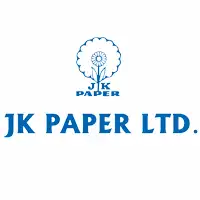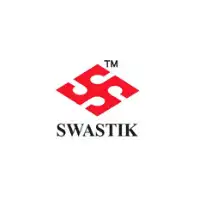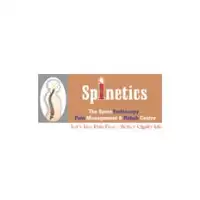What’s Muda Mura Muri in Lean Manufacturing?
Muda, Mura, and Muri are three Japanese terms that are commonly used in the context of Lean manufacturing.
Muda refers to any activity that does not add value to the product or service being produced. It is often referred to as "waste" and can take many forms, such as overproduction, waiting, excess inventory, unnecessary processing, and defects. Identifying and eliminating Muda is a key goal of Lean manufacturing, as it can result in significant cost savings and improved efficiency.
Mura refers to unevenness or inconsistency in the production process. This can include uneven workloads, unpredictable demand, and variation in production processes. Mura can lead to inefficiencies, as it can result in overproduction, excess inventory, and waiting times. Reducing Mura involves creating a more consistent production process that can respond to changes in demand and eliminate waste.
Muri refers to overburden or excessive strain on workers or equipment. This can include things like overloading machines, assigning workers to tasks beyond their capabilities, or setting unrealistic production targets. Muri can lead to reduced quality, increased errors, and even safety issues. Reducing Muri involves finding ways to balance workloads and optimize production processes to reduce strain on workers and equipment.
Together, Muda, Mura, and Muri represent the three main types of waste that can occur in a manufacturing process. By identifying and eliminating these types of waste, Lean manufacturing seeks to create a more efficient and streamlined production process that can deliver high-quality products or services at a lower cost.
We will cover the following topic in this blog
- What’s Muda?
- 7 Types of Muda (Wastes) In Lean Manufacturing
- What’s Mura?
- What’s Muri?
- Illustration of Muda Mura Muri Wastes
- How to exclude Muda, Mura, Muri Wastes?
What is Muda?
waste is a Japanese term that refers to any activity or process that does not add value to the end product or service. In Lean Manufacturing, wasteis often referred to as "waste" and is one of the key areas targeted for elimination in order to improve efficiency and productivity.
waste can take many different forms, including overproduction, waiting, excess inventory, unnecessary processing, and defects. These types of waste can add unnecessary cost, time, and complexity to the production process, reducing efficiency and profitability.
By identifying and eliminating waste, Lean Manufacturing seeks to create a more streamlined and efficient production process that delivers high-quality products or services at a lower cost. This involves continuous improvement and the implementation of Lean principles and tools, such as value stream mapping, 5S, and Kaizen events, to eliminate waste and improve overall efficiency
7 Types of Muda (Wastes) In Lean Manufacturing

In Lean Manufacturing, there are seven types of Muda, or waste, that are commonly identified and targeted for elimination. These are:
- Overproduction: Producing more than what is needed or producing too soon, which leads to excess inventory and higher costs.
- Waiting: Delays or waiting time between steps in the production process, which leads to idle time and lost productivity.
- Transportation: Unnecessary movement of products or materials between workstations, which adds time and cost to the production process.
- Processing: Performing unnecessary or excessive work on a product, which can add cost and complexity to the production process.
- Inventory: Excess inventory or materials that are not needed for immediate production, which ties up capital and storage space.
- Motion: Unnecessary movement or motion by workers or machines, which adds time and cost to the production process.
- Defects: Errors or defects in the production process, which require rework or scrap and add cost to the production process.
Eliminating these types of Muda can lead to significant improvements in the efficiency and productivity of the manufacturing process. For example, reducing overproduction can help to minimize inventory costs and reduce the risk of overstocking. Reducing waiting time can help to increase the speed of the production process and reduce idle time for workers and machines. By eliminating waste, manufacturers can create a leaner, more efficient process that delivers high-quality products or services at a lower cost.
What is Muri?
Muri is a Japanese term used in the context of Lean Manufacturing, and it refers to overburdening or excessive strain on workers or equipment. Muri can arise from factors such as setting unrealistic production targets, assigning workers to tasks beyond their capabilities, or overloading machines.
Muri can have negative impacts on the production process, including reduced quality, increased errors, and even safety issues. It can also lead to increased costs due to the need for repairs or replacement of equipment, as well as increased employee turnover due to excessive workloads and stress.
Reducing Muri involves finding ways to optimize production processes and balance workloads to reduce the strain on workers and equipment. This may involve reevaluating production targets, redistributing workloads, and implementing process improvements to reduce the need for manual intervention. By reducing Muri, manufacturing companies can create a safer and more efficient work environment while improving overall productivity and quality.
What is mura?
Mura is a Japanese term used in the context of Lean Manufacturing, and it refers to unevenness or inconsistency in the production process. Mura can arise from factors such as variations in demand, supply chain disruptions, or inconsistent production processes.
Mura can have negative impacts on the production process, including reduced quality, increased errors, and longer lead times. It can also lead to excess inventory or shortages, which can add cost and complexity to the production process.
Reducing Mura involves finding ways to balance production processes and eliminate unevenness in the production process. This may involve implementing demand-based production processes, improving production scheduling, or reducing variability in the supply chain.
By reducing Mura, manufacturing companies can create a more efficient and predictable production process, which can improve overall productivity, quality, and customer satisfaction.
How to exclude Muda, Mura, and Muri Wastes?
To exclude Muda, Mura, and Muri wastes from manufacturing processes, companies can implement Lean Manufacturing principles and tools. Here are some ways to exclude these wastes:
- Value Stream Mapping: Value stream mapping is a tool used to identify and eliminate waste in the production process. It involves mapping the entire production process and identifying areas of waste, such as unnecessary waiting, transportation, or overproduction. Once identified, improvements can be made to streamline the process and reduce waste.
- 5S: 5S is a Lean Manufacturing tool that focuses on organizing the workspace and standardizing processes to eliminate waste. It involves sorting, simplifying, sweeping, standardizing, and sustaining the workspace to create a more efficient and productive environment.
- Kaizen Events: Kaizen events are focused improvement activities that bring together cross-functional teams to identify and eliminate waste in a specific area of the production process. These events involve a structured approach to problem-solving and can lead to significant improvements in efficiency and productivity.
- Continuous Improvement: Continuous improvement is a core principle of Lean Manufacturing and involves making small, incremental improvements to the production process over time. By constantly seeking to identify and eliminate waste, companies can create a culture of continuous improvement that drives long-term success.
By implementing these tools and principles, manufacturing companies can reduce Muda, Mura, and Muri wastes, and create a more efficient, productive, and profitable production process.
Read More :
Our Clients


























































